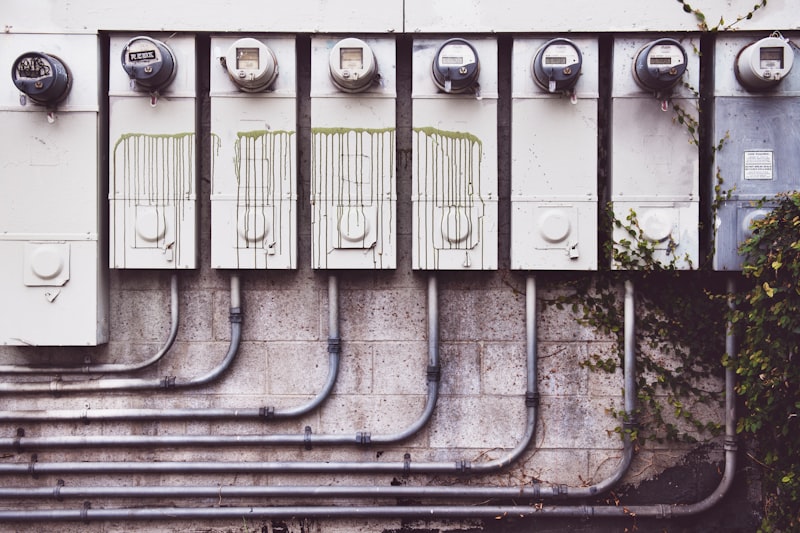Dealing with car electrical system issues can be frustrating, but understanding how to troubleshoot them can save you time and money. When your car’s electrical components start acting up, it’s often a sign of underlying problems that need attention. Here’s a guide to help you navigate through common electrical issues.
Firstly, check the battery. A dead or weak battery is a frequent culprit behind electrical failures. Inspect the battery terminals for corrosion and ensure they are tightly connected. If the battery seems fine, move on to examine the fuses. Fuses protect electrical circuits from overloads and are prone to blowing out. Replace any blown fuses with ones of the same amperage.
Next, assess the alternator. The alternator charges the battery while the engine is running. If you notice dimming headlights or difficulty starting the car, the alternator might be failing. Use a multimeter to test its output or have a professional mechanic check it for you.
Another common issue is faulty wiring. Over time, wires can wear out or get damaged, leading to electrical malfunctions. Look for exposed wires, fraying, or melted insulation. Repair or replace damaged wires to restore proper electrical flow.
Don’t overlook the importance of checking the grounding points. Poor grounding can cause electrical components to malfunction. Ensure that all grounding points are clean, secure, and free of corrosion.
Lastly, electronic components like sensors and relays could be causing problems. These components play crucial roles in various electrical systems within your car. A malfunctioning sensor, for instance, can trigger warning lights on your dashboard.
By following these troubleshooting steps, you can often diagnose and fix common car electrical system issues yourself. However, if you’re unsure or uncomfortable with these tasks, it’s always best to consult a qualified mechanic. Addressing electrical problems promptly can prevent more extensive damage and ensure your vehicle runs smoothly.
Master Your Vehicle’s Heart: Essential Tips to Troubleshoot Car Electrical Issues
When it comes to your car, understanding its electrical system is like knowing the heart of a machine. Just as the heart powers the body, the electrical system powers your vehicle, making it essential to keep it in top shape. Electrical issues can be daunting, but with a few essential tips, troubleshooting them can become more manageable.
Firstly, start with the basics. Check the battery terminals for corrosion or loose connections. A simple cleaning or tightening might solve intermittent starting problems. Remember, a secure connection ensures smooth power flow throughout your vehicle.
Next, move on to the fuses. Fuses are like the protective guards of your electrical system. A blown fuse can cause various issues, from a malfunctioning radio to more serious problems. Use your owner’s manual to locate the fuse box and check for any blown fuses. Replacing a blown fuse with the correct amp rating can often resolve mysterious electrical failures.
Harnesses and wiring are another critical area to inspect. Over time, wires can wear out or get damaged, causing shorts or open circuits. Look for visible signs of wear like fraying or exposed wires. A continuity test using a multimeter can help pinpoint where the issue lies along the wiring.
Sometimes, the culprit can be as simple as a malfunctioning switch or relay. These components control electrical circuits and can fail due to repeated use or age. Testing switches for proper operation and ensuring relays click when engaged can rule out these components as potential problems.
Lastly, if all else fails, consider seeking professional help. Automotive electrical systems can be complex, and diagnosing certain issues may require specialized tools or expertise. A qualified mechanic can conduct more in-depth diagnostics using diagnostic scanners and oscilloscopes to identify elusive electrical gremlins.
By mastering these essential tips, you can troubleshoot car electrical issues effectively and ensure your vehicle runs smoothly. Remember, like caring for your heart, regular maintenance and prompt attention to electrical issues can prolong your car’s life and keep you cruising trouble-free on the road.
A Guide to Diagnosing Car Electrical Problems Like a Pro
Have you ever been frustrated by mysterious electrical issues in your car? From flickering lights to a stubbornly silent engine, electrical problems can be daunting. But fear not! With a bit of know-how, diagnosing these issues can be easier than you think. Let’s delve into a guide to diagnosing car electrical problems like a pro.
Firstly, understanding the symptoms is key. Is your car struggling to start? Are lights dimming unexpectedly? These clues often point towards specific issues, such as a faulty battery, alternator problems, or loose connections.
Next, it’s time to play detective under the hood. Start by checking the battery connections for corrosion or looseness. A weak battery can cause a range of electrical gremlins, so ensuring a snug fit is crucial.
Moving on, inspect the alternator. This component charges the battery while the engine runs and can cause issues if it’s failing. Listen for unusual noises or check for a burning smell near the alternator, indicators of potential trouble.
Beyond these basics, wiring and fuses deserve attention. Frayed wires or blown fuses can disrupt electrical flow, leading to malfunctions. A visual inspection of wiring harnesses and a fuse box check can reveal hidden culprits.
Lastly, consider using diagnostic tools if issues persist. Multimeters and code readers can pinpoint exact problems, saving time and frustration.

Mastering the art of diagnosing car electrical problems requires patience and a methodical approach. By understanding symptoms, inspecting components, and utilizing tools when needed, you’ll navigate electrical troubleshooting like a seasoned mechanic.
Unraveling the Mystery: Step-by-Step Troubleshooting for Car Electrical Systems
When your car’s electrical systems act up, it can feel like deciphering a complex puzzle. From flickering lights to a stubbornly silent engine, electrical issues can be frustrating and sometimes daunting to diagnose. However, understanding the basics of car electrical systems and following a systematic approach to troubleshooting can often unveil the mystery and get your vehicle back on track without a costly trip to the mechanic.
Firstly, start with the obvious: check the battery connections. Loose or corroded terminals are a common culprit for many electrical problems. Ensure they are clean, tight, and free of corrosion. A quick visual inspection can save you a lot of time and effort.

Next, move on to the fuses. These small components protect electrical circuits from damage due to overload. A blown fuse can disrupt power to critical systems like lights, windows, or the radio. Refer to your owner’s manual to locate the fuse box and identify the fuse related to the malfunctioning system. Replace any blown fuses with ones of the same amperage.
If the issue persists, consider the alternator. The alternator charges the battery while the engine runs and powers the electrical system. A failing alternator can cause dimming lights, strange electrical noises, or difficulty starting the engine. Use a multimeter to test the alternator’s output voltage. A healthy alternator typically produces around 13.8 to 14.2 volts when the engine is running.
For more advanced troubleshooting, such as issues with specific components like the starter or ignition switch, consulting a professional may be necessary. However, many common electrical problems can be resolved with a methodical approach and basic tools.
By following these steps and remaining patient, you can often unravel the mystery of car electrical issues and restore your vehicle’s performance without the need for extensive repairs. Understanding your car’s electrical system empowers you to tackle minor issues and keep your vehicle running smoothly on the road.
Beyond the Basics: Advanced Techniques for Solving Car Electrical Glitches
Have you ever been frustrated by mysterious electrical issues in your car that seem to defy simple fixes? Beyond the basics of checking fuses and connections, tackling car electrical glitches can be a daunting task. However, armed with a few advanced techniques, you can diagnose and resolve these issues like a pro.
One of the first advanced techniques involves using a multimeter to measure voltage and continuity throughout the electrical system. This tool is invaluable for pinpointing where the problem lies, whether it’s a faulty wire, a bad ground connection, or a malfunctioning component. By systematically testing circuits, you can isolate the exact cause of the glitch.
Another powerful method is employing wiring diagrams specific to your vehicle. These diagrams map out the entire electrical system, helping you trace wires and understand how components are interconnected. This visual aid can reveal potential areas where shorts or breaks might occur, speeding up the diagnostic process significantly.
For intermittent electrical issues, such as sporadic dashboard lights or random failures, consider using a specialized diagnostic tool that can record data over time. These tools capture fluctuations in voltage or current that occur unpredictably, providing valuable clues that may not be apparent during a static test.
Moreover, don’t underestimate the importance of software updates and resets. Many modern cars rely heavily on computer systems that control everything from engine timing to interior lighting. Sometimes, glitches can be resolved simply by updating the car’s software to the latest version or performing a system reset to clear temporary faults.
Lastly, when all else fails, consulting with a professional automotive electrician or technician can provide expert insight and access to specialized equipment. These professionals have the knowledge and experience to tackle complex electrical issues effectively, saving you time and frustration in the long run.
By incorporating these advanced techniques into your troubleshooting arsenal, you can approach car electrical glitches with confidence. Remember, persistence and methodical testing are key to uncovering the root cause of any electrical problem, ensuring your vehicle runs smoothly on the road ahead.
Lightning Fast Fixes: Quick Solutions for Common Car Electrical Hiccups
Got a car electrical issue that’s driving you nuts? Don’t sweat it! Lightning Fast Fixes are here to save the day with quick solutions for those pesky car electrical hiccups.
Ever had your car battery suddenly go flat, leaving you stranded? It’s like your car just decided to take an unplanned nap. The culprit might just be some corroded battery terminals. Grab a wire brush, give those terminals a good scrubbing, and voila! Your car might just wake up feeling refreshed.
Or maybe your headlights are flickering like they’re having a disco party of their own. Before you call in the light show, check those connections. Sometimes a loose connection is all it takes to make your lights go haywire. Tighten things up, and you might just save yourself a trip to the mechanic.
And let’s not forget the classic case of the mysterious dead fuse. One moment everything’s working, the next—nothing. Time to play detective! Grab your owner’s manual, locate the fuse box (usually under the dashboard or in the engine compartment), and swap out that blown fuse. It’s like replacing a burnt-out light bulb at home—simple yet effective.
Now, if your car’s electric windows suddenly decide to go on strike, it could be a case of a worn-out motor. No need to panic; replacing the motor isn’t as daunting as it sounds. With a few tools and a bit of patience, you can have those windows rolling up and down smoothly again in no time.
Remember, when it comes to car electrical issues, a little DIY spirit can go a long way. These lightning-fast fixes are designed to get you back on the road without breaking a sweat. So, next time your car throws a tantrum, roll up your sleeves and give these tricks a try!
Frequently Asked Questions
How do I check if my car battery is the problem?
Learn how to diagnose a potential car battery issue by checking for common signs such as slow engine cranking, dim headlights, or the inability to start. Use a multimeter to measure the battery voltage, ensuring it meets manufacturer specifications. If voltage is low, consider recharging or replacing the battery.
What should I do if my car’s lights are flickering?
Learn what to do if your car’s lights are flickering, including checking the battery connections and alternator belt, inspecting for loose wiring or faulty bulbs, and consulting a mechanic for further diagnostics.
Why does my car keep blowing fuses?
Learn why your car keeps blowing fuses with our concise FAQ. Discover common causes, like short circuits or faulty wiring, and get tips to diagnose and fix the issue effectively.
What are common signs of car electrical system issues?
Learn about common signs indicating issues with your car’s electrical system, such as flickering dashboard lights, dim headlights, problems starting the vehicle, and electrical accessories not functioning properly.
How can I diagnose alternator problems in my car?
Learn how to diagnose alternator problems in your car efficiently. Understand common symptoms such as dimming lights or strange noises, and use a voltmeter to check battery voltage and alternator output. Follow step-by-step guides to troubleshoot and identify issues, ensuring your car’s electrical system functions optimally.


